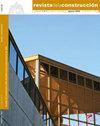Çelebiağa清真寺土-结构相互作用分析,pertek - t
IF 1.4
4区 工程技术
引用次数: 0
摘要
克班大坝建成后,一些具有历史、文化和自然价值的聚落被淹没。一个由学者和政府当局组成的科学委员会决定搬迁包括历史悠久的Çelebiağa清真寺在内的建筑物。本研究对因克班大坝建设而单独拆除重建的历史悠久的Çelebiağa清真寺进行了地震土-结构相互作用分析。采用SAP2000有限元分析软件对砖石清真寺进行分析。采用Winkler地基模型对历史清真寺所处的土壤环境进行了理想化处理。从结构不同高度的传递加速度、响应谱和侧向位移等方面考察了土-结构相互作用对历史砌体清真寺的影响。在分析结果的基础上,对某历史砌体建筑重建的土-结构相互作用进行了研究。在Kocaeli地震和Sivrice地震中,宣礼塔旗面PGA分别为0.51g和0.94g。同样,在Kocaeli和Sivrice地震下,尖塔在旗面的最大水平位移分别为11 cm和8.5 cm。考虑地质条件,对历史砌体结构在地震荷载作用下的性能进行了解释。本文章由计算机程序翻译,如有差异,请以英文原文为准。
Soil-structure interaction analysis of Çelebiağa Mosque, Pertek-Türkiye
After the construction of the Keban Dam, some settlements with historical, cultural, and natural value were flooded. A scientific committee consisting of academicians and public authorities decided to the relocation of the buildings including the historical Çelebiağa Mosque. In this study, the seismic soil-structure interaction analysis of the historical Çelebiağa Mosque, which was dismantled and reconstructed in a separate region due to the construction of the Keban Dam was carried out. The analysis of the masonry mosque was performed with the SAP2000 finite element analysis software. The Winkler foundation model was used to idealize the soil environment on which the historical mosque was built. The effects of soil-structure interaction on historical masonry mosque were examined in terms of transmitted acceleration, response spectra, and lateral displacement at various heights of the structure. Depending on the results of the analysis, the effects of soil-structure interaction of a reconstructed historical masonry building were investigated. PGA was obtained as 0.51g at the flag level of the minaret under the Kocaeli earthquake and 0.94g under the Sivrice earthquake. Again, the maximum horizontal displacements of the minaret at the flag level were obtained as 11 cm and 8.5 cm under the Kocaeli and Sivrice earthquakes. The behavior of historical masonry structures under earthquake loads has been interpreted by considering the geological conditions.
求助全文
通过发布文献求助,成功后即可免费获取论文全文。
去求助
来源期刊

Revista de la Construccion
工程技术-工程:土木
CiteScore
2.30
自引率
21.40%
发文量
0
期刊介绍:
The Journal of Construction is aimed at professionals, constructors, academics, researchers, companies, architects, engineers, and anyone who wishes to expand and update their knowledge about construction. We therefore invite all researchers, academics, and professionals to send their contributions for assessment and possible publication in this journal. The publications are free of publication charges.
OBJECTIVES
The objectives of the Journal of Construction are:
1. To disseminate new knowledge in all areas related to construction (Building, Civil Works, Materials, Business, Education, etc.).
2. To provide professionals in the area with material for discussion to refresh and update their knowledge.
3. To disseminate new applied technologies in construction nationally and internationally.
4. To provide national and foreign academics with an internationally endorsed medium in which to share their knowledge and debate the topics raised.
 求助内容:
求助内容: 应助结果提醒方式:
应助结果提醒方式:


